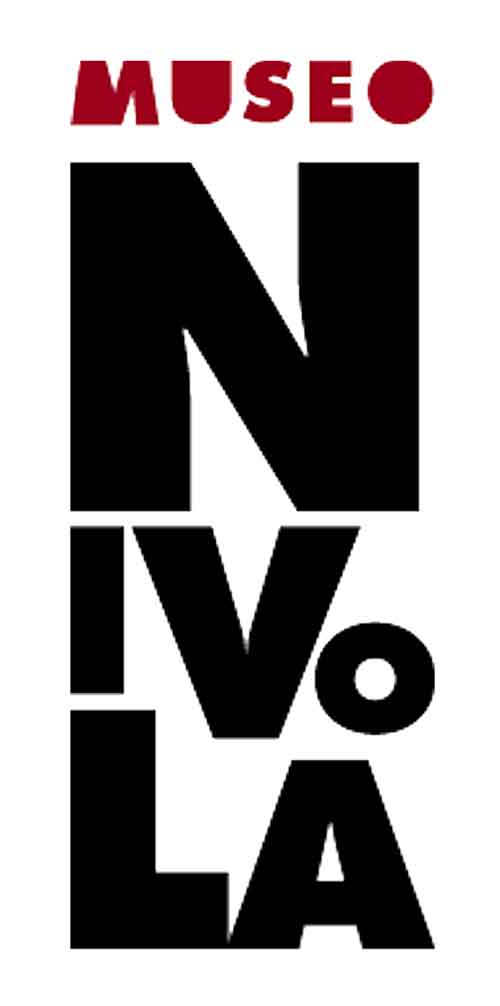
curated by Giuliana Altea, Antonella Camarda e Luca Cheri
The Nuragic Wave explores the influence exerted by the Nuragic and pre-Nuragic civilisations on the twentieth-century and contemporary art and culture in Sardinia, examining the reflections of the “Nuragic discourse” in various areas of visual production: from painting and sculpture to architecture, to design and crafts, from audiovisual to social media and mass culture.
The rediscovery of Sardinia’s prehistory started at the end of the nineteenth century. It was fueled by the excavation campaigns of the first half of the century, reaching its peak after the Second World War. The Sardinian artists and intellectuals of the 1950s found a solid ideological reference in the Nuragic and pre-Nuragic world, functional to constructing a new regional identity.
Thus, a precise iconographic trend developed, destined to last until the 1960s and reinvent itself in the postmodern and contemporary era.
The evolution of the theme was influenced over time by the impact of tourism, the spread of new age cultures, the no-global and neo-global movements, the emergence at a scientific level of renewed scholarly attention, national and international, and, at the level of costume, the phenomenon of pseudoarchaeology.
The Nuragic and pre-Nuragic civilisations are today at the centre of cultural debate in Sardinia, not only among the scientific and artistic circles but also in mass culture fueled by social media. More or less imaginative reconstructions, omnipresent in different cultural productions, from novels to video games, from advertising to street art, demonstrate that the Nuragic people are still among us.
The Nuragic Wave
Art, Design and Craft through the Test of Prehistory

Curated by
Giuliana Altea, Antonella Camarda, Luca Cheri
Assistant curators
Antonio Ottavio Cattari, Luca Poddighe
March 2 – July 7, 2024
On show:
Francesca Addari, ARP Studio, Monica Casu, Ceramiche Villa Abbas, Aldo Contini, CP Basalti, Mariangela Cubadda – Tessitrici di Zeddiani, Domenico Cubeddu, Franco D’Aspro, De Gonare (Salvatore Sechi), Dolores Demurtas, La Fucina, Maria Lai, Paolo Loddo, Giampaolo Mameli, Mauro Manca, Caterina Mele, Federico Melis, Melkiorre Melis, Fernando Mussone, Costantino Nivola, Giovanni Nonnis, P.A.M. (Perks and Mini), Giuseppe Pipia, Carmine Piras, Maria Paola Piras, Pretziada (Kyre Chenven e Ivano Atzori), Salvatore Puggioni, Claudio Pulli, Aldo Rossi, Franco Scassellati, Monica Scassellati, Angelo Sciannella, Scuola del Corallo, Giuseppe Silecchia, Roberto Sironi, Antonia Spanu Mesina, Studiopepe, Ausonio Tanda, Gavino Tilocca, Mariantonia Urru.
Exhibition promoted by
Comune di Sassari and organised by Fondazione Nivola
Main Sponsor
Fondazione di Sardegna
Sponsor
Bibanca
ARS / Arte condivisa in Sardegna
Partners
Museo Archeologico Nazionale “Giovanni Antonio Sanna” – Direzione regionale Musei Sardegna,
Università degli Studi di Sassari
Exhibition Design
Alessandro Floris
Handling and mounting
Artigianato e Design di Pietro Fois
Graphic design
Heart Studio
Printing
Character
Shipping
Arteria, Tiemme
Insurance
Reale Mutua
Catalogue
Allemandi
Thanks to
Archivio Storico Istituto Luce, Assessorato agli Enti Locali della Regione Sardegna, Banca Intesa, Banco di Sardegna, Biblioteca Comunale di Sassari, Cagliari Calcio, Camera di Commercio, Industria, Artigianato e Agricoltura di Sassari, Civico Museo Archeologico “Villa Abbas”, Sardara, Consiglio Regionale della Sardegna, Fondazione Franco Albini, Fondazione Alghero, Fondazione Aldo Rossi, Fondazione Mont’e Prama, Ilisso, Liceo Artistico “Filippo Figàri”, Sassari, Liceo Artistico “F. Costantino”, Alghero, Museo Casa Deriu, Bosa, Museo Civico di Urbania, Provincia di Sassari.
and
Bagella Abbigliamento Sardo, Carlo Delfino, Candida Lendini, Giuseppe Manca, Luigi Manca, Marie Manca, Nanni Manca, Alberto Moravetti, Giacomo Paglietti, Nannina Pellegrini, Orietta Puggioni, Giovanni Pulli,
Caterina Ruju, Sandro Ruju.
Opening hours
Tuesday – Sunday : 10:00 – 20.00
closed on monday
Last admission 45 minutes before closing time
Admission
→ Adults (18 and over) 5 euros
→ Students / groups of ten or more 3 euros
→ Free entrance
18 and under
Children
Visitors with disabilities +1
Professional tourist guides
ICOM members
Accessibility
The main access to the exhibition is via the ramp. The ramp has a slope of approximately 14%. The exhibition can be accessed via the lift located at the end of the Salone delle Botteghe.
The exhibition space is free from architectural barriers.

